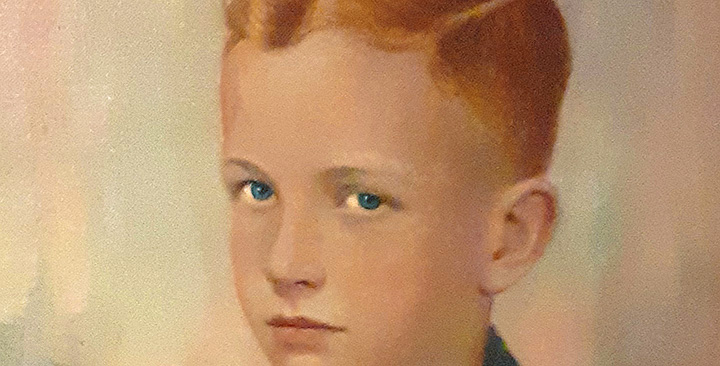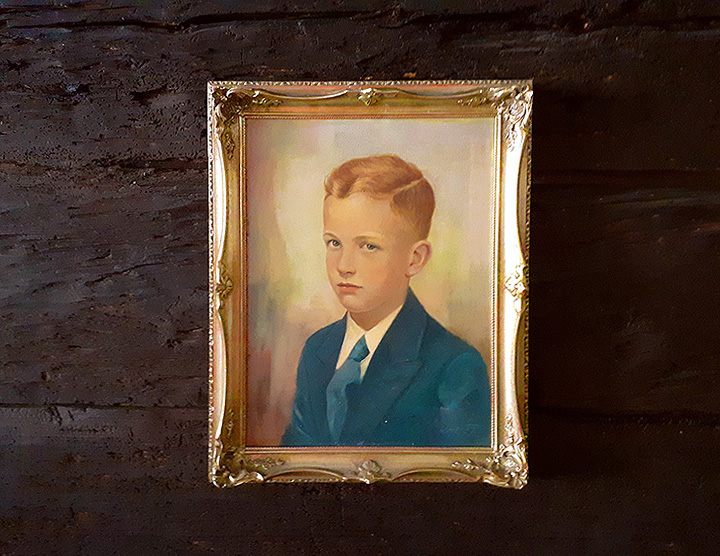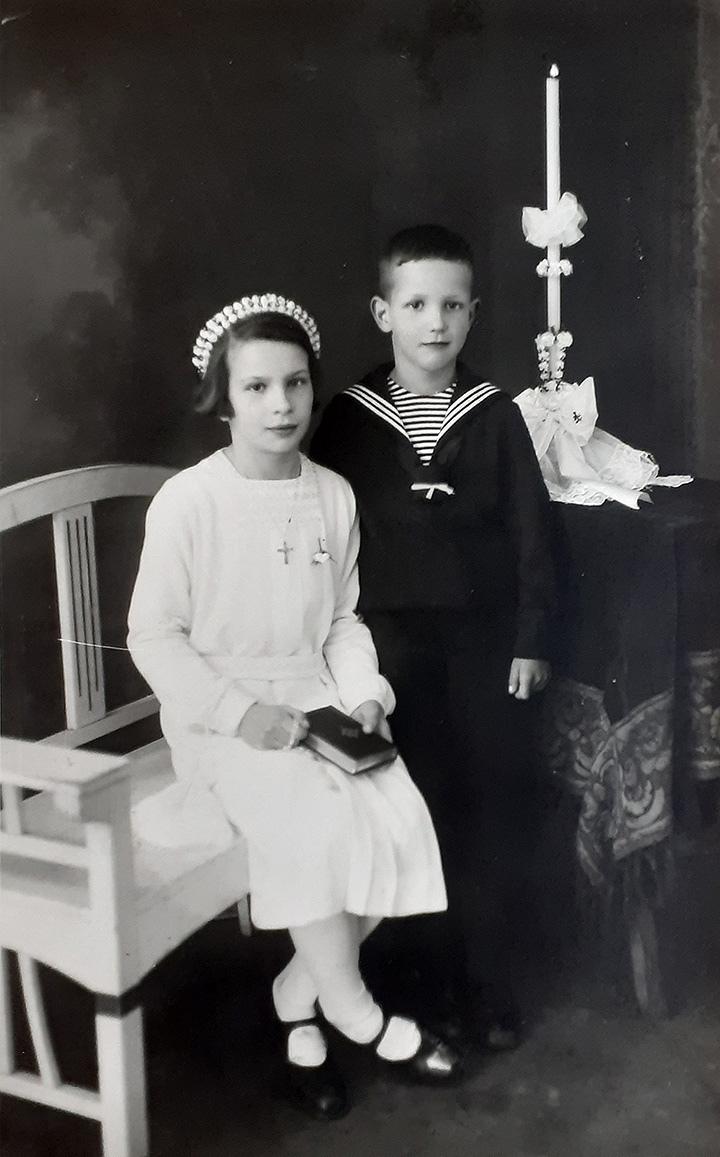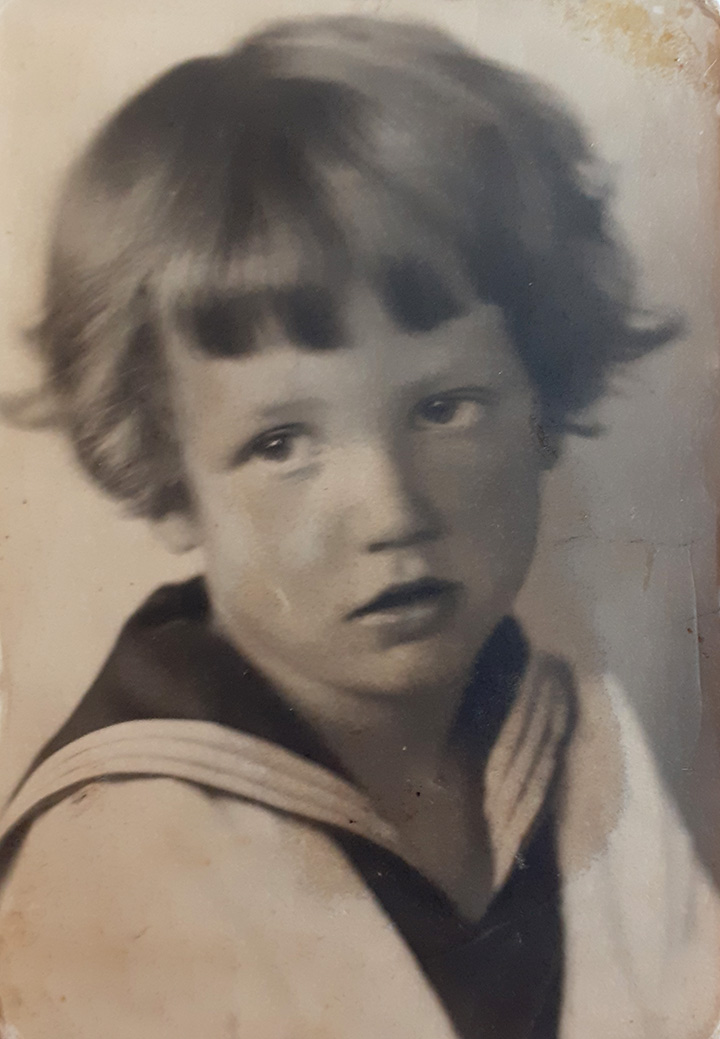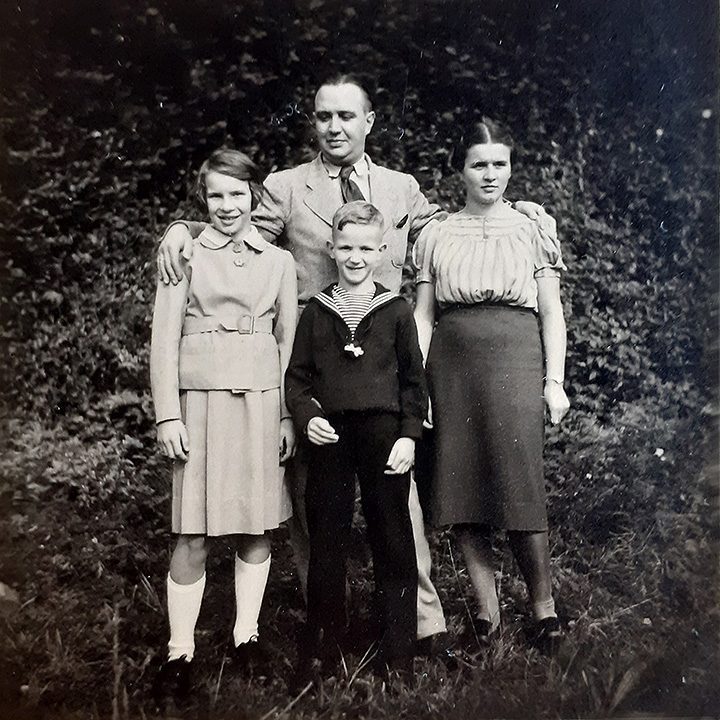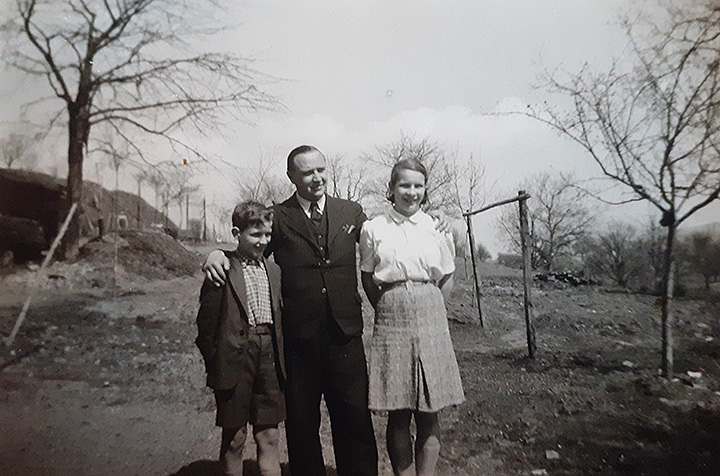A thread about a painting, about loss, grief, about the culture of memory, about a silent face on the wall and the power of the portrait, about the past that is - of course - never past, and most of all, about a short, forgotten life.
For as long as I can remember, an oil painting hung above the escritoire of my grandmother, a smooth face untouched by age, a bland, conventional depiction of eternal youth with the unconcerned, unblinking gaze of the semi-profile portrait.
The sitter was my mother& #39;s brother. 76 years ago to the day, he was killed in one of the last convulsions of the Third Reich, covering the retreat of an already dissolving army of boys, cripples and old men which simply trudged out of existence. He was 15 years old.
By most accounts, he was somewhat of a prankster; there was, behind the golden locks, blue eyes and an almost girlish prettiness, a mischievous, rather tough fellow, an excellent shot and outdoorsman and an adept in foraging.
He was born into wealth, with a charming but indifferent father and a very young mother who responded to the numerous affairs of her husband by becoming one of the first single mothers in her catholic-middle-class environment.
His cohort of 1929 was the last one drafted into the Volkssturm in March 1945, lanky schoolboys, ill-trained and ill-equipped, yet ideologised and fanaticised, who still believed in the false heroics of dulce et decorum, a noble death on a lush, green field.
According to his surviving schoolmates, he was killed in hand-to-hand combat against tirailleurs marocains, shot through the head; his mother always doubted it - there were rumours that these ill-reputed units had actually bayoneted surrendering soldiers.
Only a few miles away, his mother and sister were hiding in the cellar of a farmhouse, listening to the sound of battle, the gunfire, the artillery, not knowing that this was the infernal background to the last moments of their son and brother.
Surviving comrades told them that he actually tried to desert in the night before the battle, knocking on the door of their cottage. Tragically, they didn& #39;t respond, out of fear of marauding soldiers. This inaction haunted them forever.
Even as a child I recognized the mediocrity of the painting, but I also noticed its power. Despite the frequent moves of my grandmother, the implacable presence of this picture above the escritoire was an invariability, a constant reminder.

 Read on Twitter
Read on Twitter